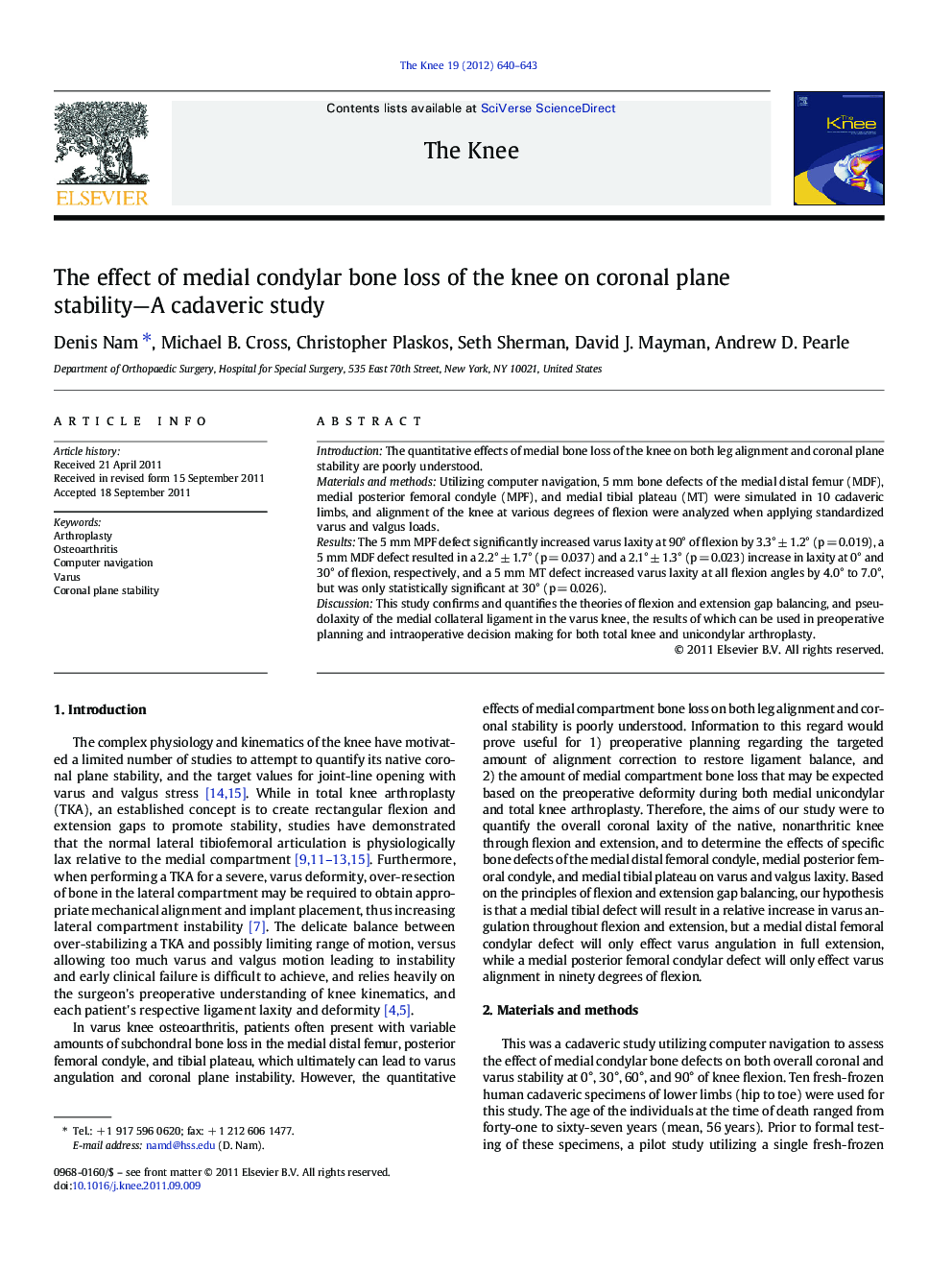| Article ID | Journal | Published Year | Pages | File Type |
|---|---|---|---|---|
| 4077902 | The Knee | 2012 | 4 Pages |
IntroductionThe quantitative effects of medial bone loss of the knee on both leg alignment and coronal plane stability are poorly understood.Materials and methodsUtilizing computer navigation, 5 mm bone defects of the medial distal femur (MDF), medial posterior femoral condyle (MPF), and medial tibial plateau (MT) were simulated in 10 cadaveric limbs, and alignment of the knee at various degrees of flexion were analyzed when applying standardized varus and valgus loads.ResultsThe 5 mm MPF defect significantly increased varus laxity at 90° of flexion by 3.3° ± 1.2° (p = 0.019), a 5 mm MDF defect resulted in a 2.2° ± 1.7° (p = 0.037) and a 2.1° ± 1.3° (p = 0.023) increase in laxity at 0° and 30° of flexion, respectively, and a 5 mm MT defect increased varus laxity at all flexion angles by 4.0° to 7.0°, but was only statistically significant at 30° (p = 0.026).DiscussionThis study confirms and quantifies the theories of flexion and extension gap balancing, and pseudolaxity of the medial collateral ligament in the varus knee, the results of which can be used in preoperative planning and intraoperative decision making for both total knee and unicondylar arthroplasty.
